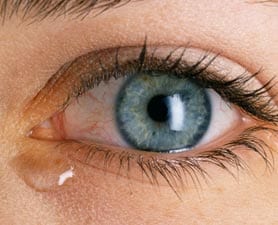 With diabetes becoming an even bigger problem around the world, more and more medical advances are being discovered to try and find a cure for the disease.
With diabetes becoming an even bigger problem around the world, more and more medical advances are being discovered to try and find a cure for the disease.
Recently, researches have designed a fresh type of biosensor which can identify small amounts of concentrations of glucose in the body’s natural fluids such as urine, tears and saliva. This new biosensor could be manufactured at a very low cost because it does not require very many procession steps in order to produce it.
Jonathan Claussen, a former Purdue University doctoral student and now a research scientist at the U.S. Naval Research Laboratory said “It’s an inherently non-invasive way to estimate glucose content in the body.”Because it can detect glucose in the saliva and tears, it’s a platform that might eventually help to eliminate or reduce the frequency of using pinpricks for diabetes testing. We are proving its functionality.”
Leaders of the project were Claussen, Purdue doctoral student Anurag Kumar, a Purdue professor of mechanical engineering Timothy Fisher, D. Marshall Porterfield, a professor of agricultural and biological engineering and other researchers at the university’s Birck Nanotechnology Center.
“Most sensors typically measure glucose in blood. Many in the literature aren’t able to detect glucose in tears and the saliva. What’s unique is that we can sense in all four different human serums: the saliva, blood, tears and urine. And that hasn’t been shown before.” Claussen said.
There are three main parts to the sensor: the layers of nanosheets, which resemble tiny rose petals that are made from the material, graphene. Graphene is a single-atom-thick film of carbon, platinum nanoparticles and the enzyme glucose oxidase.
Within each petal are a few layers of stacked graphene. Each edge of the petals has incomplete, dangling chemical bonds which are defects where platinum nanoparticles can attach to. Electrodes are then formed by combining the nanosheet petals and platinum nanoparticles. The enzyme the convert’s glucose into peroxide which then generates a signal on the electrode.
Kumar said, “Typically, when you want to make a nanostructure biosensor you have to use a lot of processing steps before you reach the final biosensor product. That involves lithography, chemical processing, etching and other steps. The good thing about these petals is that they can be grown on just about any surface, and we don’t need to use any of these steps, so it could be ideal for commercialization.”
“Because we used the enzyme glucose oxidase in this work, it’s geared for diabetes. But we could just swap out that enzyme with, for example, glutamate oxidase, to measure the neurotransmitter glutamate to test for Parkinson’s and Alzheimer’s, or ethanol oxidase to monitor alcohol levels for a breathalyzer. It’s very versatile, fast and portable.” Claussen said.
The biosensor is also being used with a variety of chemical compounds to test for other medical conditions as well, other than diabetes.